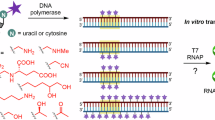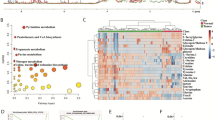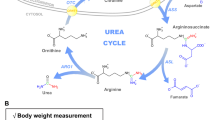Abstract
Uracil phosphoribosyltransferase, which catalyzes the conversion of uracil and 5-phosphoribosyl-1-R-diphosphate to uridine monophosphate, is important in the pyrimidine salvage pathway and is an attractive target for rational drug design by incorporation of prodrugs that are lethal to many parasitic organisms specifically. So far, uracil phosphoribosyltransferase has been reported in Arabidopsis thaliana only, not in mammals. In this study, a novel uracil phosphoribosyltransferase family cDNA encoding a 309 amino acid protein with a putative uracil phosphoribosyltransferase domain was isolated from the human fetal brain library. It was named human UPRTase (uracil phosphoribosyltransferase). The ORF of human UPRTase gene was cloned into pQE30 and expressed in Escherichia coli M15. The protein was purified by Ni-NTA affinity chromatography, but UPRTase activity could not be detected by spectrophotometry. RT-PCR analysis showed that human UPRTase was strongly expressed in blood leukocytes, liver, spleen, and thymus, with lower levels of expression in the prostate, heart, brain, lung, and skeletal muscle. Subcellular location of UPRTase–EGFP fusion protein revealed that human UPRTase was distributed in the nucleus and cytoplasm of AD293 cells. Evolutional tree analyses of UPRTases or UPRTase-domain-containing proteins showed that UPRTase was conserved in organisms. UPRTases of archaebacteria or eubacterium had UPRTase activity whereas those higher than Caenorhabditis elegans, which lacked two amino acids in the uracil-binding region, had no UPRTase activity. This means that human UPRTase may have enzymatic activity with another, unknown, factor or have other activity in pyrimidine metabolism.
Similar content being viewed by others
Log in or create a free account to read this content
Gain free access to this article, as well as selected content from this journal and more on nature.com
or
Abbreviations
- UPRTase:
-
Uracil phosphoribosyltransferase
- GFP:
-
Green fluorescent protein
- MTC:
-
Multiple tissue cDNA
- UMP:
-
Uridine monophosphate
References
Alloush HM, Kerridge D (1994) Characterisation of a partially purified uracil phosphoribosyltransferase from the opportunistic pathogen Candida albicans. Mycopathologia 125:129–141
Argos P, Hanei M, Wilson JM, Kelley WN (1983) A possible nucleotide-binding domain in the tertiary fold of phosphoribosyltransferases. J Biol Chem 258:6450–6457
Asai T, Lee CS, Chandler A, O’Sullivan WJ (1990) Purification and characterization of uracil phosphoribosyltransferase from Crithidia luciliae. Comp Biochem Physiol B 95:159–163
Bateman A, Coin L, Durbin R, Finn RD, Hollich V, Griffiths-Jones S, Khanna A, Marshall M, Moxon S, Sonnhammer EL, Studholme DJ, Yeats C, Eddy SR (2004) The Pfam protein families database. Nucleic Acids Res 32:D138–D141
Bradford MM (1976) A rapid and sensitive method for the quantification of microgram quantities of protein utilizing the principle of protein–dye binding. Anal Biochem 72:248–254
Broderick TP, Schaff DA, Bertino AM, Dush MK, Tischfield JA, Stambrook PJ (1987) Comparative anatomy of the human APRT gene and enzyme: nucleotide sequence divergence and conservation of a nonrandom CpG dinucleotide arrangement. Proc Natl Acad Sci USA 84:3349–3353
Carter D, Donald RG, Roos D, Ullman B (1997) Expression, purification, and characterization of uracil phosphoribosyltransferase from Toxoplasma gondii. Mol Biochem Parasitol 87:137–144
Dai YP, Lee CS, O’Sullivan WJ (1995) Properties of uracil phosphoribosyltransferase from Giardia intestinalis. Int J Parasitol 25:207–214
Donald RG, Roos DS (1995) Insertional mutagenesis and marker rescue in a protozoan parasite: cloning of the uracil phosphoribosyltransferase locus from Toxoplasma gondii. Proc Natl Acad Sci USA 92:5749–5753
Giffard PM, Rathsam C, Kwan E, Kwan DW, Bunny KL, Koo SP, Jacques NA (1993) The ftf gene encoding the cell-bound fructosyltransferase of Streptococcus salivarius ATCC 25975 is preceded by an insertion sequence and followed by FUR1 and clpP homologues. J Gen Microbiol 139:913–920
Iltzsch MH, Tankersley KO (1994) Structure activity relationship of ligands of uracil phosphoribosyltransferase from Toxoplasma gondii. Biochem Pharmacol 48:781–792
Islam MR, Kim H, Kang SW, Kim JS, Jeong YM, Hwang HJ, Lee SY, Woo JC, Kim SG (2006) Functional characterization of a gene encoding a dual domain for uridine kinase and uracil phosphoribosyltransferase in Arabidopsis thaliana. Plant Mol Biol [Epub ahead of print]
Jensen KF, Mygind B (1996) Different oligomeric states investigated are involved in the allosteric behaviour of uracil phosphoribosyltransferase from Escherichia coli. Eur J Biochem 204:637–645
Jensen KF, Arent S, Larsen S, Schack L (2005) Allosteric properties of the GTP activated and CTP inhibited uracil phosphoribosyltransferase from the thermoacidophilic archaeon Sulfolobus solfataricus. FEBS J 272:1440–1453
Kadziola A, Neuhard J, Larsen S (2002) Structure of product-bound Bacillus caldolyticus uracil phosphoribosyltransferase confirms ordered sequential substrate binding. Acta Cryst D D58:936–945
Kern L, de Montigny J, Jund R, Lacroute F (1990) The FUR1 gene of Saccharomyces cerevisiae: cloning, structure and expression of wild-type and mutant alleles. Gene 88:149–157
Koyama F, Sawada H, Fuji H, Hamada H, Hirao T, Ueno M, Nakano H (2000) Adenoviral-mediated transfer of Escherichia coli uracil phosphoribosyltransferase (UPRT) gene to modulate the sensitivity of the human colon cancer cells to 5-fluorouracil. Eur J Cancer 36:2403–2410
Kukimoto-Niino M, Shibata R, Murayama K, Hamana H, Nishimoto M, Bessho Y, Terada T, Shirouzu M, Kuramitsu S, Yokoyama S (2005) Crystal structure of a predicted phosphoribosyltransferase (TT1426) from Thermus thermophilus HB8 at 2.01 A resolution. Protein Sci 14:823–827
Li J, Ji C, Chen J, Yang Z, Wang Y, Fei X, Zheng M, Gu X, Wen G, Xie Y, Mao Y (2005) Identification and characterization of a novel Cut family cDNA that encodes human copper transporter protein CutC. Biochem Biophys Res Commun 337:179–183
Linde L, Jensen KF (1996) Uracil phosphoribosyltransferase from the extreme thermoacidophilic archaebacterium Sulfolobus shibatae is an allosteric enzyme, activated by GTP and inhibited by CTP. Biochem Biophys Acta 1296:16–22
Lundegaard C, Jensen KF (1999) Kinetic mechanism of uracil phosphoribosyltransferase from Escherichia coli and catalytic importance of the conserved proline in the PRPP binding site. Biochemistry 38:3327–3334
Magni G, Natalini P, Ruggieri S, Vita A (1976) Bakers’ yeast uridine nucleosidase is a regulatory copper containing protein. Biochem Biophys Res Commun 69:724–730
Maniatis T, Fritsch EF, Sambroch J (1982) Molecular cloning. Cold Spring Harbor Laboratories, Cold Spring Harbor, New York, pp 1–188
Martinussen J, Hammer K (1994) Cloning and characterization of upp, a gene encoding uracil phosphoribosyltransferase from Lactococcus lactis. J Bacteriol 176:6457–6463
Martinussen J, Glaser P, Andersen PS, Saxild HH (1995) Two genes encoding uracil phosphoribosyltransferase are present in Bacillus subtilis. J Bacteriol 177:271–274
McIvor RS, Wohlhueter RM, Plagemann PG (1983) Uracil phosphoribosyltransferase from Acholeplasma laidlawii: partial purification and kinetic properties. J Bacteriol 156:192–197
Musick WD (1981) Structural features of the phosphoribosyltransferases and their relationship to the human deficiency disorders of purine and pyrimidine metabolism. CRC Crit Rev Biochem 11:1–34
Natalini P, Ruggieri S, Santarelli I, Vita A, Magni G (1979) Baker’s yeast UMP: pyrophosphate phosphoribosyltransferase. Purification, enzymatic and kinetic properties. J Biol Chem 254:1558–1563
Neuhard J, Kelln RA (1996) In: Neidhart FC, Ingraham JL, Low KB, Magasanik B, Schaechter M, Umbarger HE (eds) Escherichia coli and Salmonella typhimurium: cellular and molecular biology. American Society for Microbiology, Washington
Ota T, Suzuki Y, Nishikawa T et al (2004) Complete sequencing and characterization of 21,243 full-length human cDNAs. Nat Genet 36:40–45
Pfefferkorn ER, Eckel ME, McAdams E (1989) Toxoplasma gondii: the biochemical basis of resistance to emimycin. Exp Parasitol 69:129–139
Schumacher MA, Carter D, Scott DM, Roos DS, Ullman B, Brennan RG (1998) Crystal structures of Toxoplasma gondii uracil phosphoribosyltransferase reveal the atomic basis of pyrimidine discrimination and prodrug binding. EMBO J 17:3219–3232
Schumacher MA, Bashor CJ, Song MH, Otsu K, Zhu S, Parry RJ, Ullman B, Brennan RG (2002) The structural mechanism of GTP stabilized oligomerization and catalytic activation of the Toxoplasma gondii uracil phosphoribosyltransferase. Proc Natl Acad Sci USA 99:78–83
Sinha SC, Smith JL (2001) The PRT protein family. Curr Opin Struct Biol 11:733–739
Traut TW, Jones ME (1996) Uracil metabolism UMP synthesis from orotic acid or uridine and conversion of uracil to a-alanine: enzymes and cDNAs. Prog Nucleic Acid Res Mol Biol 53:1–78
Acknowledgments
We thank Dr Tonghai Dou and Dr Wenbo Yu of Fudan University for helpful suggestions in relation to this paper. This work was supported by funds from the National Science Foundation of China (Grant Number 10490190 and 10490193).
Author information
Authors and Affiliations
Corresponding author
Additional information
Jixi Li and Shengdong Huang contributed equally to this work.
Rights and permissions
About this article
Cite this article
Li, J., Huang, S., Chen, J. et al. Identification and characterization of human uracil phosphoribosyltransferase (UPRTase). J Hum Genet 52, 415–422 (2007). https://doi.org/10.1007/s10038-007-0129-2
Received:
Accepted:
Published:
Issue date:
DOI: https://doi.org/10.1007/s10038-007-0129-2
Keywords
This article is cited by
-
Nucleotide metabolism: a pan-cancer metabolic dependency
Nature Reviews Cancer (2023)
-
An optimized chemical-genetic method for cell-specific metabolic labeling of RNA
Nature Methods (2020)
-
UPRT, a suicide-gene therapy candidate in higher eukaryotes, is required for Drosophila larval growth and normal adult lifespan
Scientific Reports (2015)
-
Specific targeting of prostate cancer cells in vitro by the suicide gene/prodrug system, uracil phosphoribosyltransferase/5-fluorouracil, under the control of prostate-specific membrane antigen promoter/enhancer
Prostate Cancer and Prostatic Diseases (2009)



